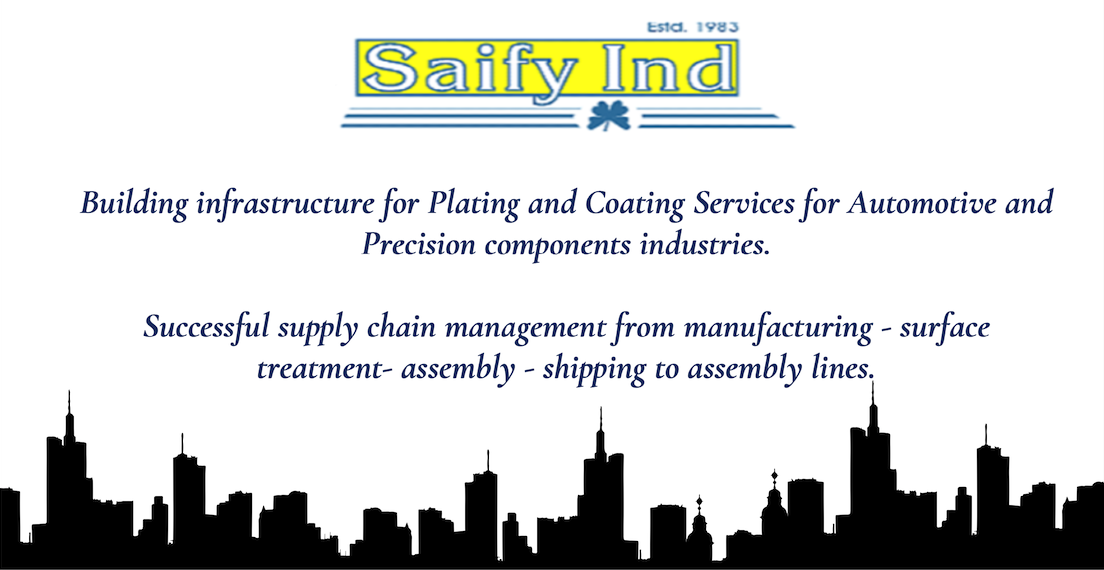
-----
Inconsistent & Variable Copper Plating Hardness
Q. We plate hard copper on mild steel cylinders which are later engraved using electronic engravers. The problem is that we can't seem to maintain the hardness of the plated copper consistent. I would like to see a consistent 200 HV plus on the hardness tester but every now and then I see a dip in the hardness, which even goes down to 180 HV. If I try to overdose the electrolyte with the hardness additive the plated copper becomes brittle and then I have to use a carbon filter. The other problem is that the engraving section complains about excess burrs when they cut a coarse angle, so I need to improve the copper quality too.
I would appreciate if someone could suggest a way to overcome the above mentioned problems.
SHEIKH RIZWANIn of charge Plating Section - KARACHI, SINDH, PAKISTAN
2004
A. I think no one can recommend anything with the very little information you gave. What chemistry are you using: sulphate, fluoborate, pyrophosphate, cyanide? And what kind of hardness additive are you adding? The only thing that I can guess is the excess of burrs comes from the same low hardness deposit (the cutting chips don't break). Give more details to try to give you an intelligent tip.
Guillermo MarrufoMonterrey, NL, Mexico
2004
A. Given what you've said I would assume you're plating cylinders in an acid copper bath. In the sulfuric acid bath, copper plates preferentially, the additive is a controlled impurity. To successfully co-deposit the additive the current density is increased, also the concentration of the copper as copper sulphate ⇦ on eBay or Amazon [affil link] must be controlled. If the copper sulphate concentration increases, the additive cannot co-deposit, trying to overcome this by increasing the dosage of additive will leave you with organic contamination, thus brittleness. Control your copper sulphate and sulfuric acid concentrations and you should be able to consistently achieve the hardness you need.
Hank Kudlinski- Guilford, Connecticut
2005
January 26, 2011
I must agree with Hank Kudlinski here, if the sulphate and acid levels are not correct then its virtually impossible to control your hardness level.
we run a chloride free solution (and as such always use de- I water )with sulphate at 220 g/l and sulfuric 61 g/l, maintaining a hardness of 220V as this suits our higher speed engravers, lower hardness around 190-200 may be more suitable for slower or older heads.
hope this helps
- Liverpool, England
Q. Please let us Know What is the International Standard of Copper Hardness for Electronic Engraving.
please let us Know the Optimum Range of Minimum & Maximum.
- Rudrapur, Uttarakhand, India
March 31, 2009
A. Hi, Umma. Letter 49930 is about that topic and seems to suggest 200 Vickers. letter 38332 suggests 195 to 205 HV. Good luck.
Regards,

Ted Mooney, P.E.
Striving to live Aloha
finishing.com - Pine Beach, New Jersey
Ted is available for instant help
or longer-term assistance.
Q. Why does the hardness suddenly decrease when I add sulfuric acid into the copper plating electrolyte?
Komal Kumar- Uttarakhand, India
April 6, 2010
A. Hi, Komal. Letter 54564 and several other threads here suggest that higher sulfuric acid leads to greater, not lesser hardness. However, that letter also suggests that the heat released from adding the sulfuric acid may raise the temperature of the bath, which does cause lower hardness. Good luck.
Regards,

Ted Mooney, P.E.
Striving to live Aloha
finishing.com - Pine Beach, New Jersey
Ted is available for instant help
or longer-term assistance.
Q. I am searching for a way to increase the hardness in a copper pyrophosphate solution. The application is for plating DMM's in the record plating process. I am looking for a hardness between 230-250 KHN.
D Bancroft- Garden Grove, California, USA
December 29, 2011
A. I looked in Properties of Electrodeposited Metals and Alloys
[affil link to
Amazon
or
on AbeBooks affil links] second edition by Safranek. Its KHN is given with a 200 g weight and hardness was under 100 for a grain refined copper pyrophosphate deposit. All else was lower.
I assume that you are using a proprietary additive. What does that company have to say? If this is a home brew, I doubt if you will get your desired hardness.
"Modern Electroplating"
[on
AbeBooks,
eBay, or
Amazon affil links]
by Lowenheim lists the hardest plate as 250 vickers, kg.mm*2 from an ammonium citrate modified bath.
It also lists one as 150 - 210 °From a M & T additive, again in vickers.
- Navarre, Florida
January 5, 2012
Q. When we do acid copper plating with 179 g/l copper sulphate and sulfuric acid 13.5 ml/l. After plating to get 0.2 mm thickness, the plated component is getting brittle. Why? Is it necessary to have any additive, if so what additive and the qty of additive.
Dear sir kindly advise us how to solve this problem.
Thanks.
Kind regards,
chandramanipg
- Bangalore, Karnataka, India
July 31, 2014
Q, A, or Comment on THIS thread -or- Start a NEW Thread
